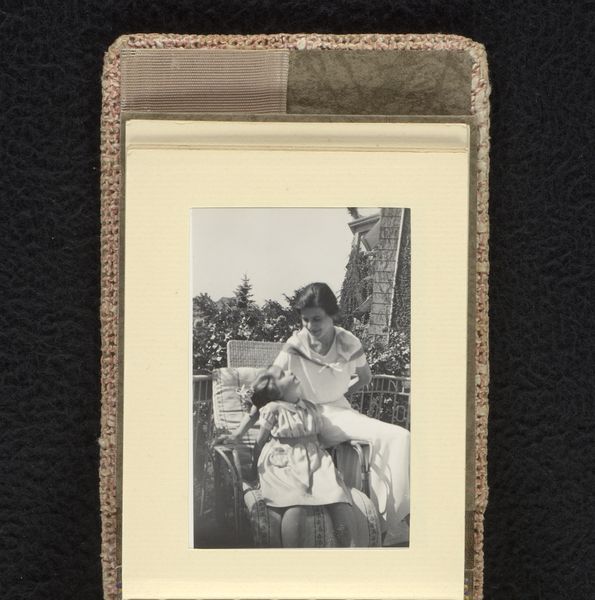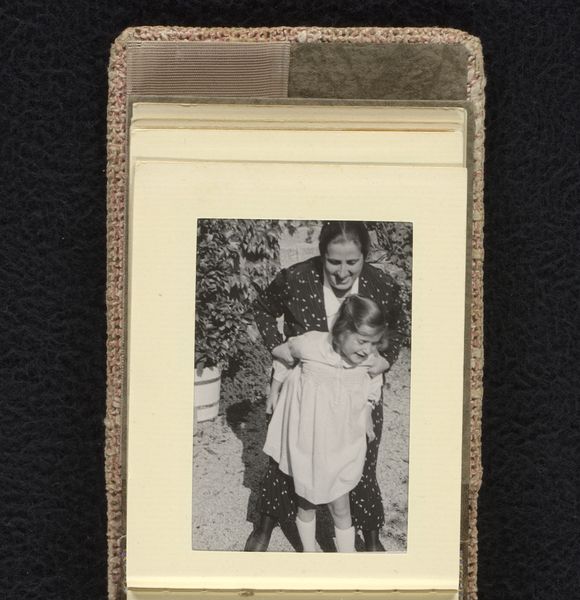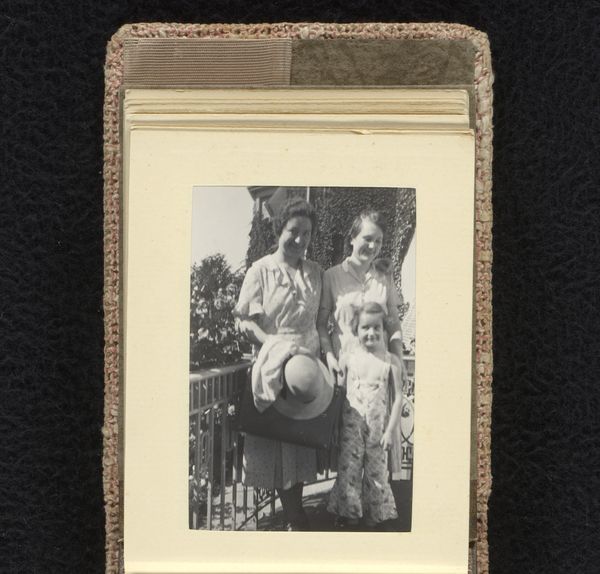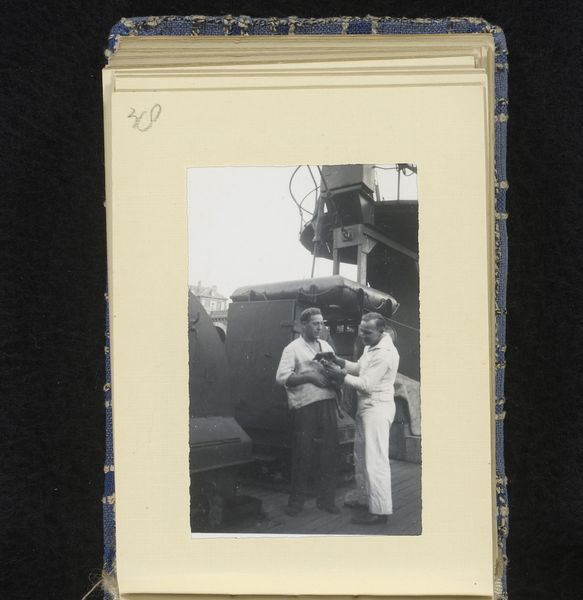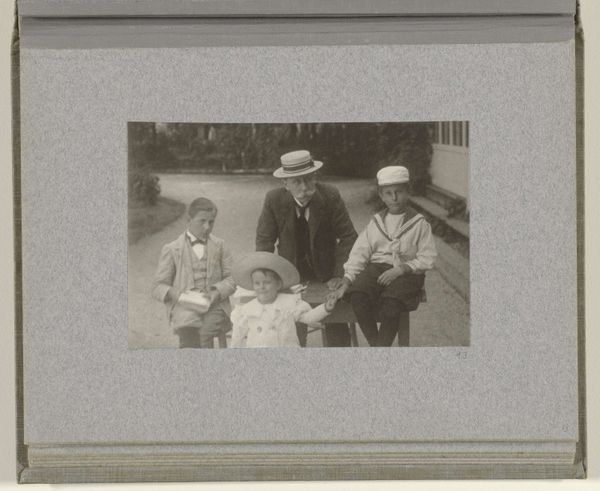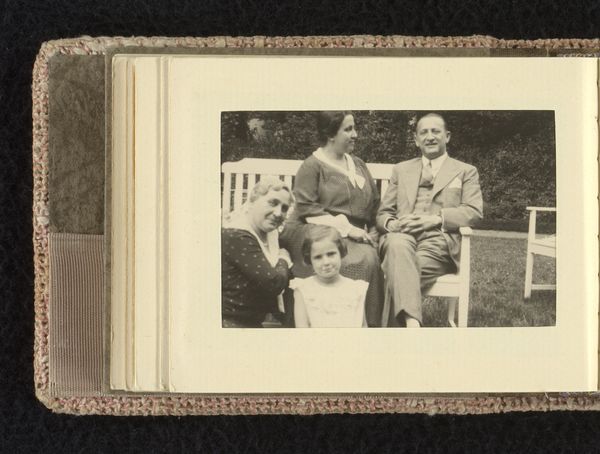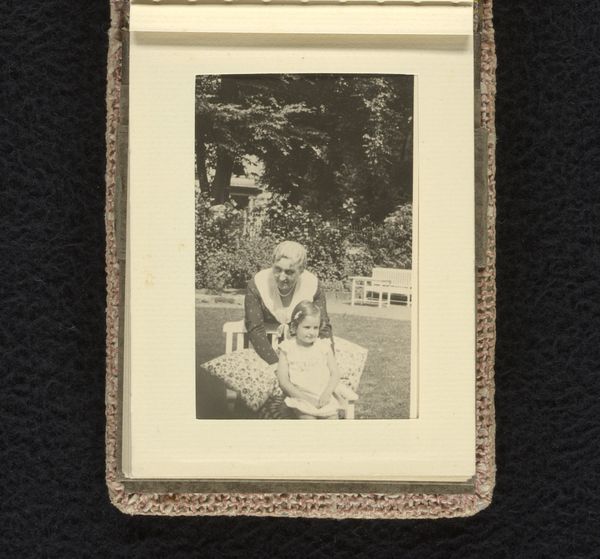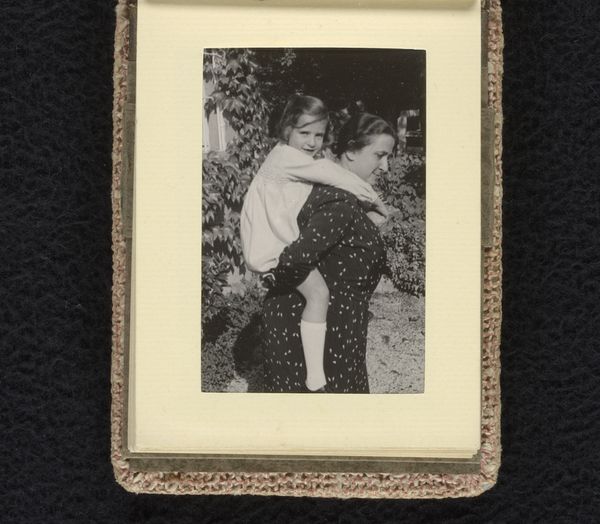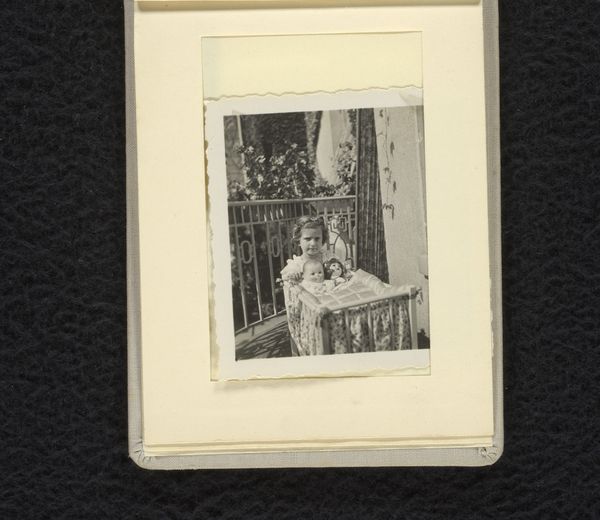
Isabel Wachenheimer op de bank met haar oom Willy Moos, en haar moeder Else Wachenheimer-Moos en een onbekende vrouw op de achtergrond, juli-augustus 1933, Hamburg Possibly 1933 - 1937
0:00
0:00
photography, gelatin-silver-print
#
portrait
#
photography
#
group-portraits
#
gelatin-silver-print
#
genre-painting
#
modernism
Dimensions: height 65 mm, width 92 mm, height 80 mm, width 106 mm
Copyright: Rijks Museum: Open Domain
Curator: This is a photograph titled "Isabel Wachenheimer op de bank met haar oom Willy Moos, en haar moeder Else Wachenheimer-Moos en een onbekende vrouw op de achtergrond, juli-augustus 1933, Hamburg." It is a gelatin-silver print dating probably from 1933 to 1937. Editor: There's a formality to this portrait. The subjects appear carefully arranged, but there’s also a poignant sense of restrained emotion, a kind of stilling of time. Curator: Considering the date, that restraint takes on a historical weight. The family's position as Jews in Hamburg at that time is inescapable. The photograph functions not just as a family memento but as documentation of a life about to be fundamentally changed, perhaps even erased. The use of the gelatin-silver process allowed for a sharp clarity, creating an artifact with an immediate visual presence even decades later. Editor: Visually, I'm drawn to the composition, particularly the stark contrast between light and shadow. This intensifies the subjects' expressions. The layering of figures creates a depth despite the limited tonal range. It uses light and shadow for emphasis—notice the little girl looking away from the viewer. Curator: Exactly, the social context elevates this simple image. The photo, presumably taken in a garden, hints at a certain bourgeois normalcy, now rendered bittersweet by what was to come. It invites contemplation on issues of identity, family, and historical memory. The labor invested in this careful construction contrasts sharply with the disintegration the family would soon experience. Editor: Perhaps. But as a photographic object, the controlled aesthetic qualities speak to an attempt to capture more than just a moment. Consider the angles and the specific way light plays on each subject. Curator: It becomes difficult, though, to divorce the aesthetic choice from the lived reality; it’s like the medium itself bears witness to history. This photograph highlights how materials carry historical weight beyond their inherent properties. It’s a document shaped by power and circumstance. Editor: Well, for me it captures the fragility of familial bonds but formal elements carry significant weight beyond their documentary qualities. It encourages us to appreciate photography, particularly portraiture, as more than mere records, rather seeing them as works of art in and of themselves. Curator: Perhaps the dialogue we have here opens up this historical picture to future interpretations and understandings that provide it further lasting power. Editor: Absolutely, as long as viewers keep an open eye to every part that makes this composition what it is.
Comments
No comments
Be the first to comment and join the conversation on the ultimate creative platform.

